| Coll. Date (mm/dd/yyyy) |
| October 12, 2007; 2008; 2009;2010; 2012 |
|
| Locality & GPS coords |
| Jacumba Wilderness, Imperial Co., CA |
|
| Elevation (ft) |
|
| Habitat |
|
| Host Plant |
E. fasciculatum polifolium (Flat top buckwheat)
|
|
| Collector(s) |
|
Field observations:
| Larvae (Jan 2007) |
larvae seem to have the ability to sense approaching danger - when approaching the host plant, I have often observed the larvae quickly tumbling off the plant, rolling deep down within the buckwheat branches and out of sight. On several occations, I have heard reports of the species not found in habitat during its larval stage, but making a trip to that habitat I would often see this behavior from the larvae, therefore possibly making it difficult for others to locate the larvae if they are unaware of caterpillar tactic. Larvae reared in labs do not respond this way. |
| |
| |
|
| |
|
|
| Ecology Notes:
|
|
| HABITAT |
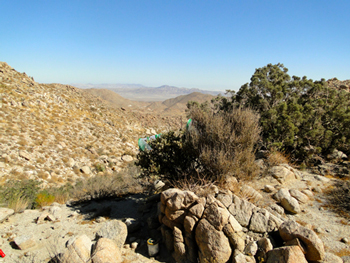 |
| Lower Colorado Desert of Imperial Co., CA |
|
|
|
| HOST |
![]() |
| Plant (need image) |
|
|
|
| Voucher No. |
|
| Found as |
|
| Food plant used |
host plant from field |
| Voucher fate |
|
| Number of days (1st-Ultimate instar) |
depending on temperature, larvae will take from 3 months to 3 weeks. Rearing my larvae under desk lamp, I was able to finish the brood in under a month. Monitoring the same population in the field, the larvae emerged early January 2008 and finished early April 2008. |
| Number of days (prepupa) |
--- |
| Number of days (pupa to eclosion) |
Under normal conditions, with pupation occuring early April and Sana Ana winds begining September, days between pupation and eclosion should estimate 6 months. However, under lab conditions, a portion of my specimens never enter diapause and end up eclosing early late March/Early April 2008. |
Morphology Notes:
| Ovum: |
|
| Larvae: |
- ultimate stage, lateral ( Lower Colorado Desert Complex)
|
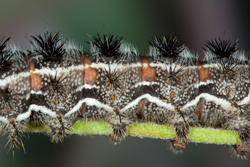 |
| |
| Pupa: |
|
| Cocoon: |
|
| Adult: |
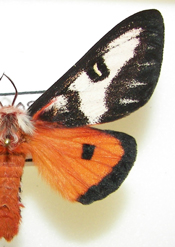 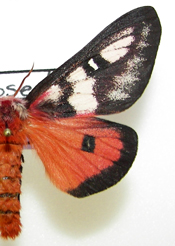 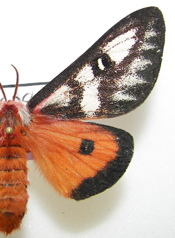 |
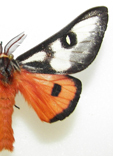 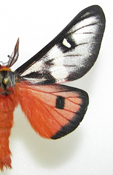 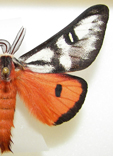 |
- Lower Colorado Desert Complex
- females top, males bottom
- specimen reared 2007, eclosion spring 2008
|
|
Behavior notes:
| Ovum: |
- Ova rings small (est. 10-15 eggs posted on stem), never really creating a 'ring.'
- Ova are sometimes placed within the plant and scattered (5-6 ova per plant branch) and therefore hidden. Other observation include the common type of ova posting, which consists of posting eggs high up on flower stems.
|
| Larvae: |
- newly molted larva will back-roll, rubbing setae to fluff and spread urticating spins.
|
- early instars follow along in a line like a snake
|
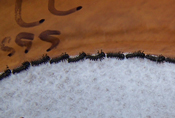 |
- Chemical Defense: urticating setae
|
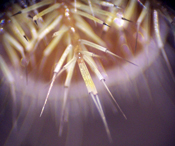 |
| Pupa: |
----- |
| Cocoon: |
----- |
| Adult: |
Phenotype:
- changed photoperiod and temps resulted in more melanic specimens ( Lower Colorado Desert Complex)
|
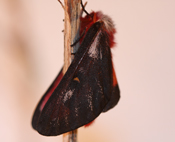 |
| Pheremone:
|
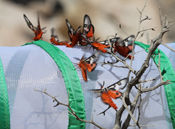 |
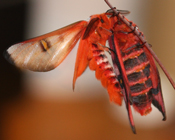 |
|
Parasitoids:
| Parasitoids (yes/no) |
Yes |
| Para. lep voucher: |
--- |
| Para. species: |
- Egg ring comparison, parasitized vs. non-parasitized - Parasitized eggs (left), normal egg shells (right)
|
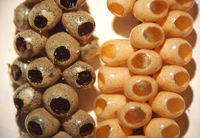 |
|
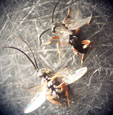 |
| Para. voucher #: |
|
|
|
| Ova |
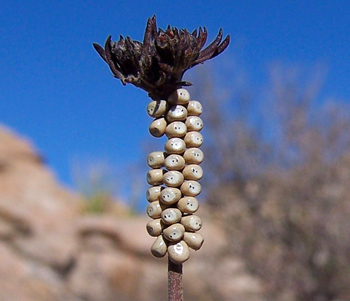 |
| Egg ring, Lower Colorado Desert Complex |
|
|
| |
| Larva |
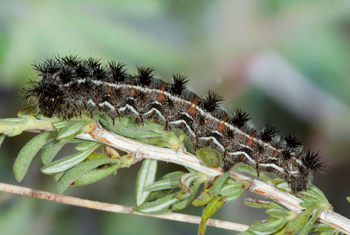 |
| Ultimate Stage on host, Lower Colorado Desert Complex |
|
|
| |
| Head |
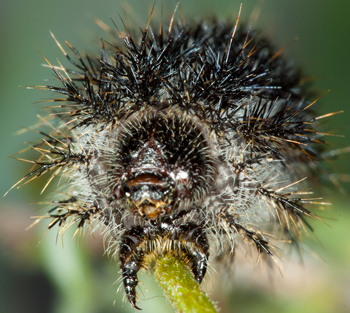 |
| Head, Ultimate stage, Lower Colorado Desert Complex |
|
|
| |
| Cocoon |
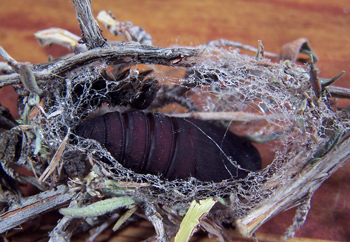 |
| Cocoon, Lower Colorado Desert Complex |
|
|
| |
| Adult |
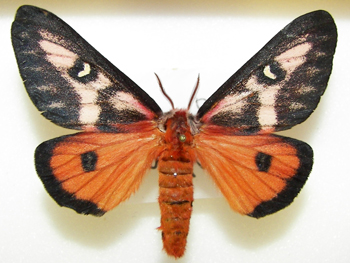 |
| Adult, female, Lower Colorado Desert Complex |
|
|
| |
| Adult |
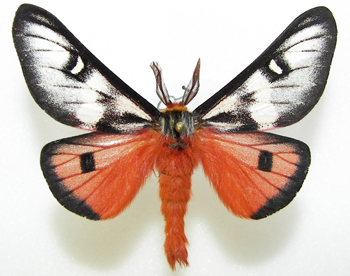 |
| Adult, male, Lower Colorado Desert Complex |
|
|
| |
|

